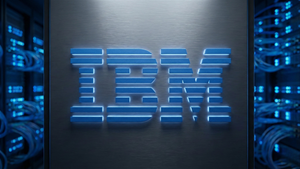
Tower Semiconductor (NASDAQ: TSEM) is currently experiencing a remarkable period of expansion and investor confidence, with its stock performance surging on the back of a profoundly positive outlook. This ascent is not merely a fleeting market trend but a direct reflection of the company's strategic positioning within the burgeoning artificial intelligence (AI) and high-speed data center markets. As of November 10, 2025, Tower Semiconductor has emerged as a critical enabler of the AI supercycle, with its specialized foundry services, particularly in silicon photonics (SiPho) and silicon germanium (SiGe), becoming indispensable for the next generation of AI infrastructure.
The company's recent financial reports underscore this robust trajectory, with third-quarter 2025 results exceeding analyst expectations and an optimistic outlook projected for the fourth quarter. This financial prowess, coupled with aggressive capacity expansion plans, has propelled Tower Semiconductor's valuation to new heights, nearly doubling its market value since the Intel acquisition attempt two years prior. The semiconductor industry, and indeed the broader tech landscape, is taking notice of Tower's pivotal role in supplying the foundational technologies that power the ever-increasing demands of AI.
The Technical Backbone: Silicon Photonics and Silicon Germanium Drive AI Revolution
At the heart of Tower Semiconductor's current success lies its mastery of highly specialized process technologies, particularly Silicon Photonics (SiPho) and Silicon Germanium (SiGe). These advanced platforms are not just incremental improvements; they represent a fundamental shift in how data is processed and transmitted within AI and high-speed data center environments, offering unparalleled performance, power efficiency, and scalability.
Tower's SiPho platform, exemplified by its PH18 offering, is purpose-built for high-volume photonics foundry applications crucial for data center interconnects. Technically, this platform integrates low-loss silicon and silicon nitride waveguides, advanced Mach-Zehnder Modulators (MZMs), and efficient on-chip heater elements, alongside integrated Germanium PIN diodes. A significant differentiator is its support for an impressive 200 Gigabits per second (Gbps) per lane, enabling current 1.6 Terabits per second (Tbps) products and boasting a clear roadmap to 400 Gbps per lane for future 3.2 Tbps optical modules. This capability is critical for hyperscale data centers, as it dramatically reduces the number of external optical components, often halving the lasers required per module, thereby simplifying design, improving cost-efficiency, and streamlining the supply chain for AI applications. Unlike traditional electrical interconnects, SiPho offers optical solutions that inherently provide higher bandwidth and lower power consumption, a non-negotiable requirement for the ever-growing demands of AI workloads. The transition towards co-packaged optics (CPO), where the optical interface is integrated closer to the compute unit, is a key trend enabled by SiPho, fundamentally transforming the switching layer in AI networks.
Complementing SiPho, Tower's Silicon Germanium (SiGe) BiCMOS (Bipolar-CMOS) platform is optimized for high-frequency wireless communications and high-speed networking. This technology features SiGe Heterojunction Bipolar Transistors (HBTs) with remarkable Ft/Fmax speeds exceeding 340/450 GHz, offering ultra-low noise and high linearity vital for RF applications. Tower's popular SBC18H5 SiGe BiCMOS process is particularly suited for optical fiber transceiver components like Trans-impedance Amplifiers (TIAs) and Laser Drivers (LDs), supporting data rates up to 400Gb/s and beyond, now being adopted for next-generation 800 Gb/s data networks. SiGe's ability to offer significantly lower power consumption and higher integration compared to alternative materials like Gallium Arsenide (GaAs) makes it ideal for beam-forming ICs in 5G, satellite communication, and even aerospace and defense, enabling highly agile electronically steered antennas (ESAs) that displace bulkier mechanical counterparts.
Initial reactions from the AI research community and industry experts, as of November 2025, have been overwhelmingly positive. Tower Semiconductor's aggressive expansion into AI-focused production using these technologies has garnered significant investor confidence, leading to a surge in its valuation. Experts widely acknowledge Tower's market leadership in SiGe and SiPho for optical transceivers as critical for AI and data centers, predicting continued strong demand. Analysts view Tower as having a competitive edge over even larger players like TSMC (TPE: 2330) and Intel (NASDAQ: INTC), who are also venturing into photonics, due to Tower's specialized focus and proven capabilities. The substantial revenue growth in the SiPho segment, projected to double again in 2025 after tripling in 2024, along with strategic partnerships with companies like Innolight and Alcyon Photonics, further solidify Tower's pivotal role in the AI and high-speed data revolution.
Reshaping the AI Landscape: Beneficiaries, Competitors, and Disruption
Tower Semiconductor's burgeoning success in Silicon Photonics (SiPho) and Silicon Germanium (SiGe) is sending ripples throughout the AI and semiconductor industries, fundamentally altering the competitive dynamics and offering unprecedented opportunities for various players. As of November 2025, Tower's impressive $10 billion valuation, driven by its strategic focus on AI-centric production, highlights its pivotal role in providing the foundational technologies that underpin the next generation of AI computing.
The primary beneficiaries of Tower's advancements are hyperscale data center operators and cloud providers, including tech giants like Alphabet (NASDAQ: GOOGL) (with its TPUs), Amazon (NASDAQ: AMZN) (with Inferentia and Trainium), and Microsoft (NASDAQ: MSFT). These companies are heavily investing in custom AI chips and infrastructure, and Tower's SiPho and SiGe technologies provide the critical high-speed, energy-efficient interconnects necessary for their rapidly expanding AI-driven data centers. Optical transceiver manufacturers, such as Innolight, are also direct beneficiaries, leveraging Tower's SiPho platform to mass-produce next-generation optical modules (400G/800G, 1.6T, and future 3.2T), gaining superior performance, cost efficiency, and supply chain resilience. Furthermore, a burgeoning ecosystem of AI hardware innovators and startups like Luminous Computing, Lightmatter, Celestial AI, Xscape Photonics, Oriole Networks, and Salience Labs are either actively using or poised to benefit from Tower's advanced foundry services. These companies are developing groundbreaking AI computers and accelerators that rely on silicon photonics to eliminate data movement bottlenecks and reduce power consumption, leveraging Tower's open SiPho platform to bring their innovations to market. Even NVIDIA (NASDAQ: NVDA), a dominant force in AI GPUs, is exploring silicon photonics and co-packaged optics, signaling the industry's collective shift towards these advanced interconnect solutions.
Competitively, Tower Semiconductor's specialization creates a distinct advantage. While general-purpose foundries and tech giants like Intel (NASDAQ: INTC) and TSMC (TPE: 2330) are also entering the photonics arena, Tower's focused expertise and market leadership in SiGe and SiPho for optical transceivers provide a significant edge. Companies that continue to rely on less optimized, traditional electrical interconnects risk being outmaneuvered, as the superior energy efficiency and bandwidth offered by photonic and SiGe solutions become increasingly crucial for managing the escalating power consumption of AI workloads. This trend also reinforces the move by tech giants to develop their own custom AI chips, creating a symbiotic relationship where they still rely on specialized foundry partners like Tower for critical components.
The potential for disruption to existing products and services is substantial. Tower's technologies directly address the "power wall" and data movement bottlenecks that have traditionally limited the scalability and performance of AI. By enabling ultra-high bandwidth and low-latency communication with significantly reduced power consumption, SiPho and SiGe allow AI systems to achieve unprecedented capabilities, potentially disrupting the cost structures of operating large AI data centers. The simplified design and integration offered by Tower's platforms—for instance, reducing the number of external optical components and lasers—streamlines the development of high-speed interconnects, making advanced AI infrastructure more accessible and efficient. This fundamental shift also paves the way for entirely new AI architectures, blurring the lines between computing, communication, and sensing, and enabling novel AI products and services that are not currently feasible with conventional technologies. Tower's aggressive capacity expansion and strategic partnerships further solidify its market positioning at the core of the AI supercycle.
A New Era for AI Infrastructure: Broader Impacts and Paradigm Shifts
Tower Semiconductor's breakthroughs in Silicon Photonics (SiPho) and Silicon Germanium (SiGe) extend far beyond its balance sheet, marking a significant inflection point in the broader AI landscape and the future of computational infrastructure. As of November 2025, the company's strategic investments and technological leadership are directly addressing the most pressing challenges facing the exponential growth of artificial intelligence: data bottlenecks and energy consumption.
The wider significance of Tower's success lies in its ability to overcome the "memory wall" – the critical bottleneck where traditional electrical interconnects can no longer keep pace with the processing power of modern AI accelerators like GPUs. By leveraging light for data transmission, SiPho and SiGe provide inherently faster, more energy-efficient, and scalable solutions for connecting CPUs, GPUs, memory units, and entire data centers. This enables unprecedented data throughput, reduced power consumption, and smaller physical footprints, allowing hyperscale data centers to operate more efficiently and economically while supporting the insatiable demands of large language models (LLMs) and generative AI. Furthermore, these technologies are paving the way for entirely new AI architectures, including advancements in neuromorphic computing and high-speed optical I/O, blurring the lines between computing, communication, and sensing. Beyond data centers, the high integration, low cost, and compact size of SiPho, due to its CMOS compatibility, are crucial for emerging AI applications such as LiDAR sensors in autonomous vehicles and quantum photonic computing.
However, this transformative potential is not without its considerations. The development and scaling of advanced fabrication facilities for SiPho and SiGe demand substantial capital expenditure and R&D investment, a challenge Tower is actively addressing with its $300-$350 million capacity expansion plan. The inherent technical complexity of heterogeneously integrating optical and electrical components on a single chip also presents ongoing engineering hurdles. While Tower holds a leadership position, it operates in a fiercely competitive market against major players like TSMC (TPE: 2330) and Intel (NASDAQ: INTC), who are also investing heavily in photonics. Furthermore, the semiconductor industry's susceptibility to global supply chain disruptions remains a persistent concern, and the substantial capital investments could become a short-term risk if the anticipated demand for these advanced solutions does not materialize as expected. Beyond the hardware layer, the broader AI ecosystem continues to grapple with challenges such as data quality, bias mitigation, lack of in-house expertise, demonstrating clear ROI, and navigating complex data privacy and regulatory compliance.
Comparing this to previous AI milestones reveals a significant paradigm shift. While earlier breakthroughs often centered on algorithmic advancements (e.g., expert systems, backpropagation, Deep Blue, AlphaGo), or the foundational theories of AI, Tower's current contributions focus on the physical infrastructure necessary to truly unleash the power of these algorithms. This era marks a move beyond simply scaling transistor counts (Moore's Law) towards overcoming physical and economic limitations through innovative heterogeneous integration and the use of photonics. It emphasizes building intelligence more directly into physical systems, a hallmark of the "AI supercycle." This focus on the interconnect layer is a crucial next step to fully leverage the computational power of modern AI accelerators, potentially enabling neuromorphic photonic systems to achieve PetaMac/second/mm2 processing speeds, leading to ultrafast learning and significantly expanding AI applications.
The Road Ahead: Innovations and Challenges on the Horizon
The trajectory of Tower Semiconductor's Silicon Photonics (SiPho) and Silicon Germanium (SiGe) technologies points towards a future where data transfer is faster, more efficient, and seamlessly integrated, profoundly impacting the evolution of AI. As of November 2025, the company's aggressive roadmap and strategic investments signal a period of continuous innovation, albeit with inherent challenges.
In the near-term (2025-2027), Tower's SiPho platform is set to push the boundaries of data rates, with a clear roadmap to 400 Gbps per lane, enabling 3.2 Terabits per second (Tbps) optical modules. This will be coupled with enhanced integration and efficiency, further reducing external optical components and halving the required lasers per module, thereby simplifying design and improving cost-effectiveness for AI and data center applications. Collaborations with partners like OpenLight are expected to bring hybrid integrated laser versions to market, further solidifying SiPho's capabilities. For SiGe, near-term developments focus on continued optimization of high-speed transistors with Ft/Fmax speeds exceeding 340/450 GHz, ensuring ultra-low noise and high linearity for advanced RF applications, and supporting bandwidths up to 800 Gbps systems, with advancements towards 1.6 Tbps. Tower's 300mm wafer process, upgrading from its existing 200mm production, will allow for monolithic integration of SiPho with CMOS and SiGe BiCMOS, streamlining production and enhancing performance.
Looking into the long-term (2028-2030 and beyond), the industry is bracing for widespread adoption of Co-Packaged Optics (CPO), where optical transceivers are integrated directly with switch ASICs or processors, bringing the optical interface closer to the compute unit. This will offer unmatched customization and scalability for AI infrastructure. Tower's SiPho platform is a key enabler of this transition. For SiGe, long-term advancements include 3D integration of SiGe layers in stacked architectures for enhanced device performance and miniaturization, alongside material innovations to further improve its properties for even higher performance and new functionalities.
These technologies unlock a myriad of potential applications and use cases. SiPho will remain crucial for AI and data center interconnects, addressing the "memory wall" and energy consumption bottlenecks. Its role will expand into high-performance computing (HPC), emerging sensor applications like LiDAR for autonomous vehicles, and eventually, quantum computing and neuromorphic systems that mimic the human brain's neural structure for more energy-efficient AI. SiGe, meanwhile, will continue to be vital for high-speed communication within AI infrastructure, optical fiber transceiver components, and advanced wireless applications like 5G, 6G, and satellite communications (SatCom), including low-earth orbit (LEO) constellations. Its low-power, high-frequency capabilities also make it ideal for edge AI and IoT devices.
However, several challenges need to be addressed. The integration complexity of combining optical components with existing electronic systems, especially in CPO, remains a significant technical hurdle. High R&D costs, although mitigated by leveraging established CMOS fabrication and economies of scale, will persist. Managing power and thermal aspects in increasingly dense AI systems will be a continuous engineering challenge. Furthermore, like all global foundries, Tower Semiconductor is susceptible to geopolitical challenges, trade restrictions, and supply chain disruptions. Operational execution risks also exist in converting and repurposing fabrication capacities.
Despite these challenges, experts are highly optimistic. The silicon photonics market is projected for rapid growth, reaching over $8 billion by 2030, with a Compound Annual Growth Rate (CAGR) of 25.8%. Analysts see Tower as leading rivals in SiPho and SiGe production, holding over 50% market share in Trans-impedance Amplifiers (TIAs) and drivers for datacom optical transceivers. The company's SiPho segment revenue, which tripled in 2024 and is expected to double again in 2025, underscores this confidence. Industry trends, including the shift from AI model training to inference and the increasing adoption of CPO by major players like NVIDIA (NASDAQ: NVDA), further validate Tower's strategic direction. Experts predict continued aggressive investment by Tower in capacity expansion and R&D through 2025-2026 to meet accelerating demand from AI, data centers, and 5G markets.
Tower Semiconductor: Powering the AI Supercycle's Foundation
Tower Semiconductor's (NASDAQ: TSEM) journey, marked by its surging stock performance and positive outlook, is a testament to its pivotal role in the ongoing artificial intelligence supercycle. The company's strategic mastery of Silicon Photonics (SiPho) and Silicon Germanium (SiGe) technologies has not only propelled its financial growth but has also positioned it as an indispensable enabler for the next generation of AI and high-speed data infrastructure.
The key takeaways are clear: Tower is a recognized leader in SiGe and SiPho for optical transceivers, demonstrating robust financial growth with its SiPho revenue tripling in 2024 and projected to double again in 2025. Its technological innovations, such as the 200 Gbps per lane SiPho platform with a roadmap to 3.2 Tbps, and SiGe BiCMOS with over 340/450 GHz Ft/Fmax speeds, are directly addressing the critical bottlenecks in AI data processing. The company's commitment to aggressive capacity expansion, backed by an additional $300-$350 million investment, underscores its intent to meet escalating demand. A significant breakthrough involves technology that dramatically reduces external optical components and halves the required lasers per module, enhancing cost-efficiency and supply chain resilience.
In the grand tapestry of AI history, Tower Semiconductor's contributions represent a crucial shift. It signifies a move beyond traditional transistor scaling, emphasizing heterogeneous integration and photonics to overcome the physical and economic limitations of current AI hardware. By enabling ultra-fast, energy-efficient data communication, Tower is fundamentally transforming the switching layer in AI networks and driving the transition to Co-Packaged Optics (CPO). This empowers not just tech giants but also fosters innovation among AI companies and startups, diversifying the AI hardware landscape. The significance lies in providing the foundational infrastructure that allows the complex algorithms of modern AI, especially generative AI, to truly flourish.
Looking at the long-term impact, Tower's innovations are set to guide the industry towards a future where optical and high-frequency analog components are seamlessly integrated with digital processing units. This integration is anticipated to pave the way for entirely new AI architectures and capabilities, further blurring the lines between computing, communication, and sensing. With ambitious long-term goals of achieving $2.7 billion in annual revenues, Tower's strategic focus on high-value analog solutions and robust partnerships are poised to sustain its success in powering the next generation of AI.
In the coming weeks and months, investors and industry observers should closely watch Tower Semiconductor's Q4 2025 financial results, which are projected to show record revenue. The execution and impact of its substantial capacity expansion investments across its fabs will be critical. Continued acceleration of SiPho revenue, the transition towards CPO, and concrete progress on 3.2T optical modules will be key indicators of market adoption. Finally, new customer engagements and partnerships, particularly in advanced optical module production and RF infrastructure growth, will signal the ongoing expansion of Tower's influence in the AI-driven semiconductor landscape. Tower Semiconductor is not just riding the AI wave; it's building the surfboard.
This content is intended for informational purposes only and represents analysis of current AI developments.
TokenRing AI delivers enterprise-grade solutions for multi-agent AI workflow orchestration, AI-powered development tools, and seamless remote collaboration platforms.
For more information, visit https://www.tokenring.ai/.






